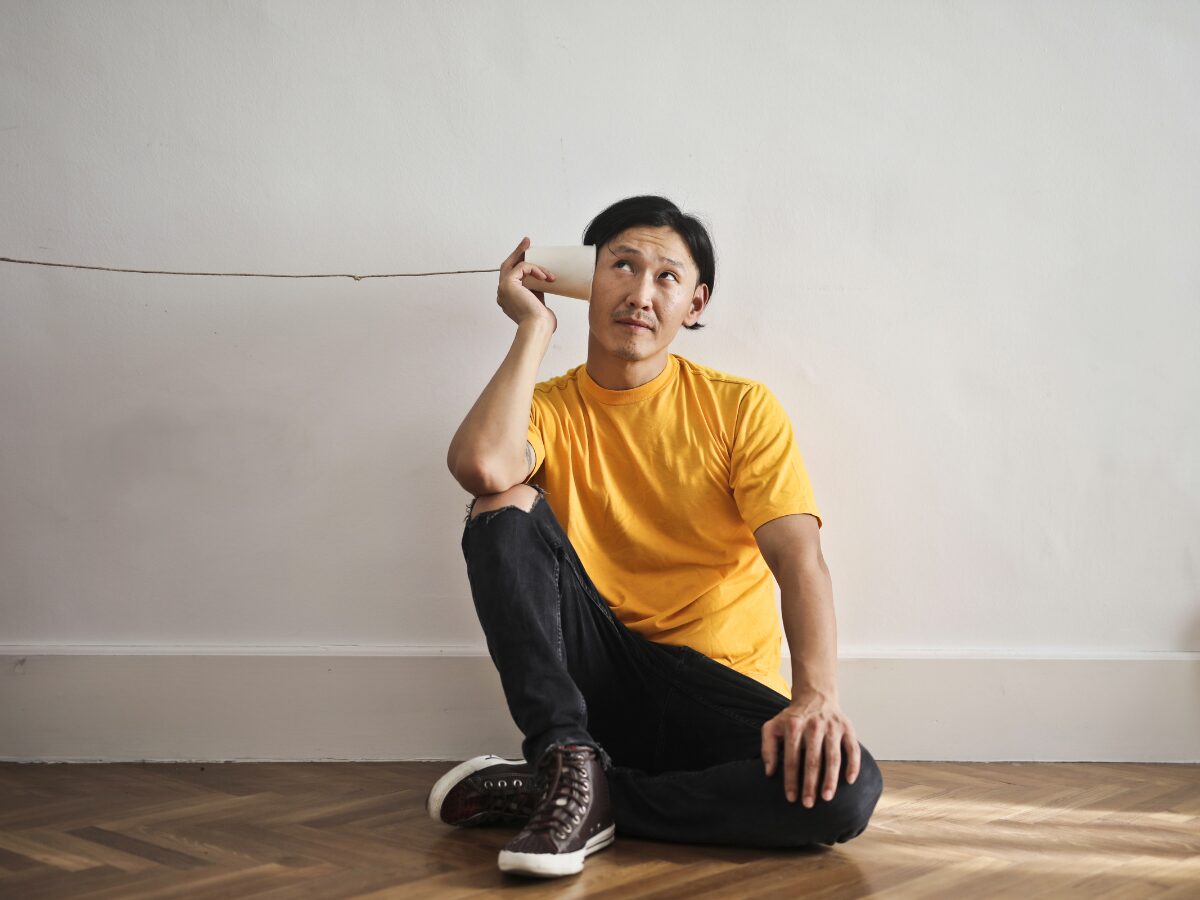Introduction
Active listening is one of the most essential skills for fostering strong, healthy relationships. Unlike passive hearing, active listening involves giving full attention to your partner, understanding their perspective, and showing genuine interest in what they have to say. For men looking to connect more deeply with their partners, learning to listen actively can help prevent misunderstandings, reduce conflict, and build trust.
In this article, we’ll explore why active listening is so vital in relationships, the benefits it brings, and practical steps to becoming a better listener in your relationship.
What is Active Listening?
Active listening is the process of fully focusing on, understanding, and responding thoughtfully to what another person is saying. This skill goes beyond simply hearing the words spoken—it involves picking up on the nuances of tone, body language, and underlying emotions.
Elements of Active Listening
- Focused Attention: Giving undivided attention without distractions.
- Reflective Responses: Summarising or paraphrasing what you hear to ensure understanding.
- Nonverbal Engagement: Using body language, eye contact, and nodding to show interest.
- Empathy: Trying to understand the speaker’s feelings and perspective.
Why Active Listening is Crucial in Relationships
Active listening creates a foundation of trust, empathy, and mutual respect. Here’s why it’s essential for maintaining a healthy relationship.
Strengthens Emotional Connection
When you listen actively, your partner feels valued and respected. This feeling of being heard strengthens the emotional connection between you and fosters a sense of closeness. Actively listening to your partner reassures them that their thoughts and feelings matter to you.
Helps Prevent Misunderstandings
Miscommunication can easily lead to misunderstandings and conflicts. Active listening reduces these risks by encouraging clarification. When both partners are fully engaged in a conversation, they’re more likely to understand each other’s perspectives, minimising potential friction.
Encourages Open Communication
Knowing they have your full attention can make your partner feel safe to express their thoughts and emotions. This openness creates a foundation of trust, making it easier for both partners to discuss difficult or sensitive topics.
Practical Steps to Practice Active Listening
Becoming a better listener requires mindfulness and practice. Here are steps to help you incorporate active listening into your daily interactions with your partner.
1. Eliminate Distractions
Put away your phone, turn off the TV, and focus entirely on your partner. Distractions prevent you from being fully present, which can make your partner feel undervalued. By eliminating these interruptions, you create a space where your partner feels like a priority.
2. Use Reflective Statements
Reflecting back what your partner says shows that you’re engaged and helps prevent misunderstandings. For example, if your partner says, “I’ve had a stressful day,” you might respond with, “It sounds like you’ve been dealing with a lot today.” Reflective statements like these let your partner know you’re paying attention and encourage them to share more.
3. Ask Open-Ended Questions
Open-ended questions invite your partner to expand on their thoughts. Instead of asking, “Are you okay?” try, “How did that make you feel?” or “What’s been on your mind lately?” These questions create space for deeper sharing and show genuine interest.
Nonverbal Cues that Enhance Active Listening
Active listening isn’t just about words; nonverbal cues play a powerful role in conveying your interest and empathy.
Maintain Eye Contact
Eye contact is a simple yet effective way to show that you’re focused and engaged. It signals respect, understanding, and empathy, helping your partner feel seen and valued. Avoiding eye contact or frequently looking away can create distance and imply disinterest.
Use Nods and Facial Expressions
Nods, smiles, and other facial expressions demonstrate that you’re listening attentively and encourage your partner to continue sharing. These subtle cues provide reassurance that you’re engaged in the conversation.
Lean Forward or Mirror Posture
Mirroring your partner’s posture or leaning forward slightly signals interest and empathy. These body language cues reinforce that you’re mentally and emotionally present, strengthening the connection between you.
Responding Thoughtfully and Empathetically
Active listening involves responding in ways that validate your partner’s feelings and encourage further communication.
Validate Their Feelings
Validation reassures your partner that their feelings are understood, even if you don’t necessarily agree. Simple phrases like, “I can see why that would be frustrating” or “It sounds like that was really hard for you” let them know that you respect their emotions.
Avoid Offering Unsolicited Solutions
While it may be tempting to jump in with solutions, especially if your partner is discussing a challenge, sometimes people simply want to be heard. If she’s sharing a problem, focus on understanding rather than problem-solving, unless she specifically asks for advice. This approach shows that you’re there to support her emotionally rather than trying to “fix” the issue.
Practice Empathy by Putting Yourself in Her Shoes
Empathy involves trying to understand your partner’s experience from their perspective. Imagine how she might be feeling, and respond with sensitivity. Saying, “I can only imagine how tough that must be,” shows empathy and reinforces that her feelings are valid and respected.
Benefits of Active Listening in the Long Term
Regularly practising active listening can have a lasting, positive impact on your relationship. Here’s how it benefits you both over time.
Builds Stronger Emotional Intimacy
Active listening fosters a sense of emotional intimacy that strengthens your relationship. By consistently showing that you care about her thoughts and feelings, you build a foundation of mutual trust and understanding that deepens your connection.
Reduces Conflicts and Resentments
When both partners feel heard and understood, there’s less room for misunderstandings and unresolved resentment. Actively listening during difficult conversations can diffuse tension, leading to more productive and harmonious interactions.
Creates a Supportive Partnership
In a relationship where active listening is practised, both partners feel safe expressing themselves openly. This atmosphere of mutual support encourages growth, resilience, and a stronger partnership overall.
How to Maintain Active Listening During Difficult Conversations
During difficult conversations, emotions can run high, making it harder to listen effectively. Here’s how to stay focused on active listening even in challenging moments.
Pause Before Responding
Take a moment before responding to collect your thoughts. Pausing allows you to avoid impulsive reactions and respond thoughtfully, keeping the conversation respectful and constructive.
Use “I” Statements to Express Your Feelings
When it’s your turn to speak, use “I” statements rather than “you” statements to avoid sounding accusatory. For example, say, “I feel concerned when…” rather than “You always…” This approach helps prevent defensiveness and keeps the focus on understanding each other.
Recognise When to Take a Break
If the conversation becomes too intense, it’s okay to suggest a short break to gather your thoughts. Let her know that you’re still committed to resolving the issue and suggest revisiting the conversation after you’ve both had a moment to cool off.
Conclusion
Active listening is an invaluable skill that enhances communication, fosters empathy and strengthens the emotional bond in relationships. By focusing fully on your partner’s words, responding with empathy, and creating a safe space for expression, you build a foundation of trust and respect. Over time, these small acts of attention make a big difference, helping you both feel valued and understood. Embracing active listening in your relationship leads to a deeper, more fulfilling connection, where both partners feel truly seen and heard.
References
- Active Listening Tips for Improved Communication – Help Guide


